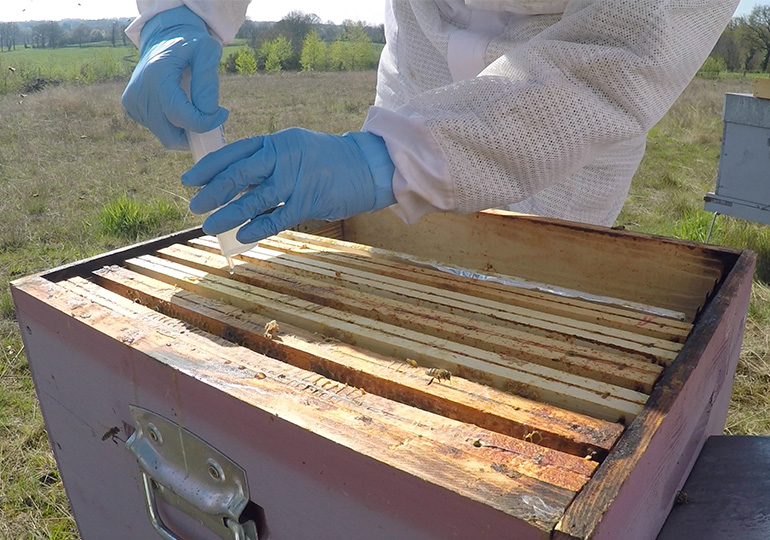What is oxalic acid?
Oxalic acid is an organic compound naturally present in some plants and minerals (such as parsley, sorrels and beetroots). It has ancient uses in various industrial settings (as bleaching or cleaning agent) and was one of the first natural molecules to be synthetized by scientists back in the 18th century. Beekeepers in Europe have observed that oxalic acid can be an efficient method to get rid of varroa mites in a hive and have used it as treatment for decades. However, most of oxalic acids present on the market cannot be used legally for beekeeping. They have not been registered for use in beehives. Treating against varroa is necessary to keep bees healthy and strong, but making sure that the treatments we use will not harm the consumers of the hive products, or the environment, is just as important.
This is why the Environmental Protection Agency (EPA) made a move in 2015, by approving a presentation of oxalic acid specifically for bees, giving now a legal way to American beekeepers to treat their colonies with this promising molecule.

Here are a few tips that you may want to consider before going oxalic:
Since this is a “flash” treatment, it kills varroa mites very effectively, but only during a few days. Therefore, if you have brood in your hive, the emergent bees (and all the mites present in each capped cell) will not be treated. It will result in a re-infestation of the hive that you really want to avoid. This is why oxalic acid had always been the preferred treatment for the winter season (between November and January), if you notice a mite infestation going up the recommended thresholds.
Yes, that may sound silly, but this is the actual recommendation that you can find for all the oxalic acid treatments. Like all the treatments, better use it wisely than overdoing it. This is why it is always recommended to use it on broodless colonies, to take advantage of the best environment possible for your one-shot oxalic treatment.
Again, think about the end-user. You, as beekeepers, have the duty to guarantee the safety of the hive products (honey, pollen, royal jelly, and so on). Varroa treatments should never be applied when supers are on the hives. For oxalic acid, it is recommended to wait two weeks before adding your suppers (for example, if your hives go to the almonds in January).
Protective glasses, mask, gloves, long sleeves, pants, socks and shoes when mixing AND applying oxalic acid. You definitely want to avoid any splash of oxalic acid on your skin or in your eyes. It may be a treatment that you can use in beehives, but this is still an acid. Never forget it.
That could be the No1 advice for all the existing varroa treatment. You really do want to avoid re-infestation between hives, or even between apiaries if they are close one another.
 by Véto-pharma
by Véto-pharma  by Véto-pharma
by Véto-pharma